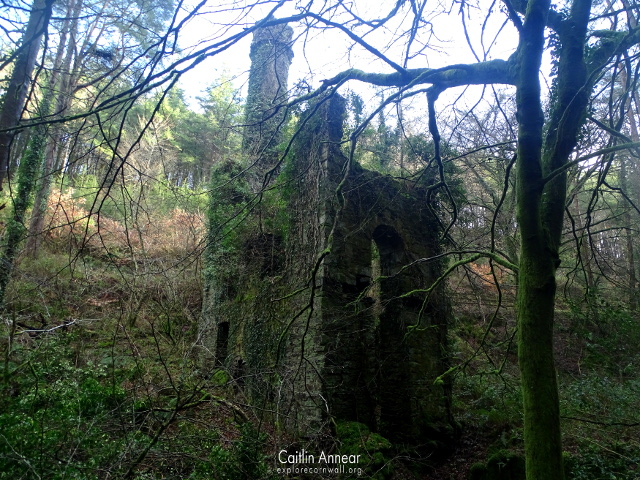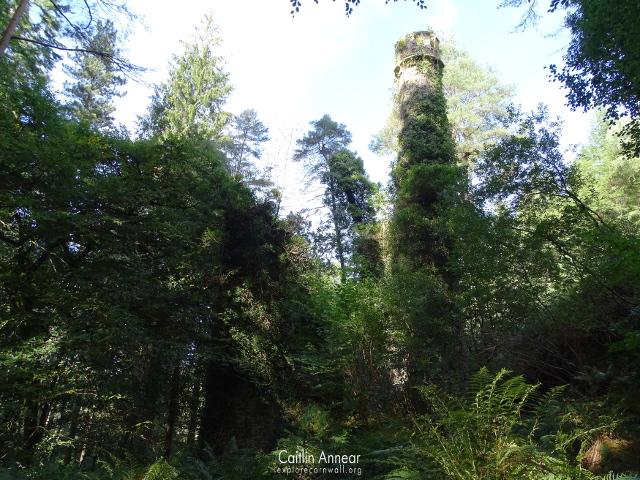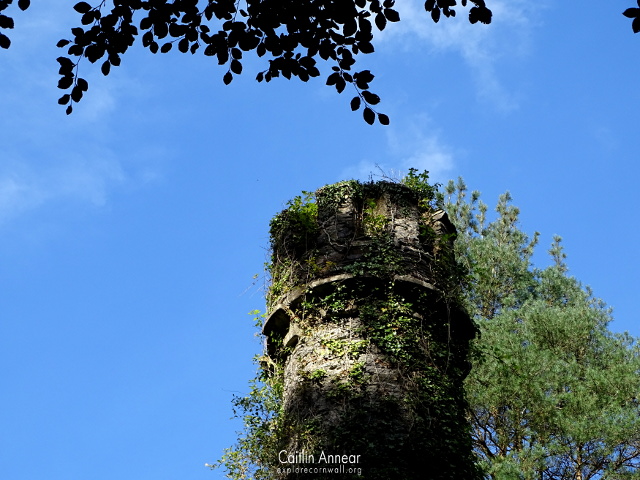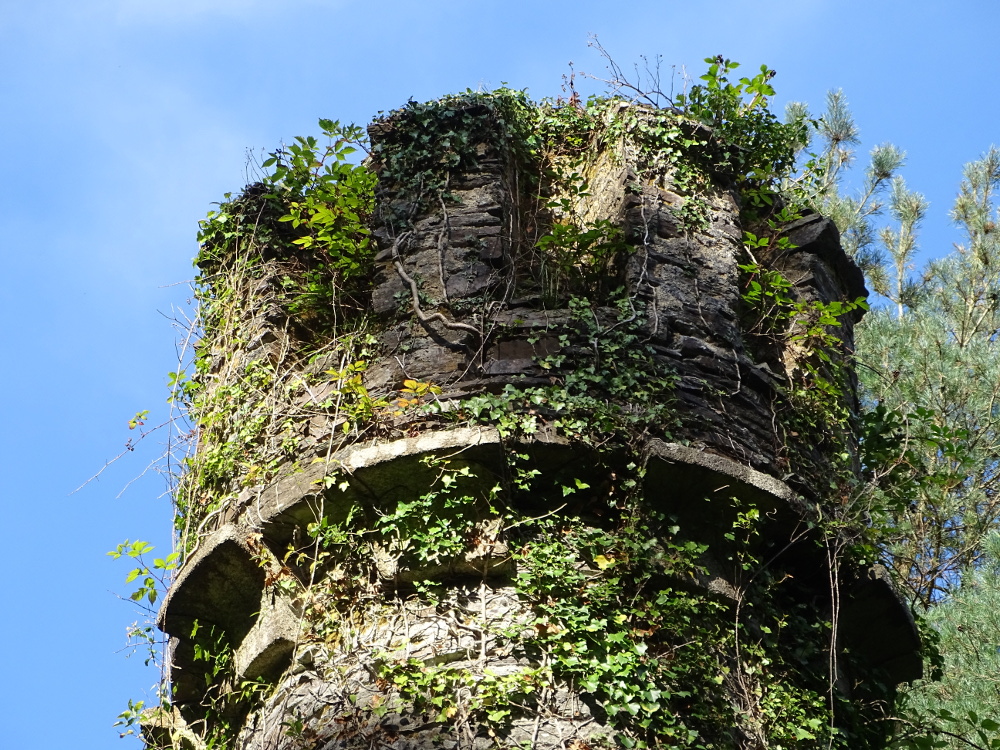Wheal Glynn, also known as Hurtstock Mine, is smuggled away in the back of Cardinham woods. Underground work began here in 1854 with the digging of a new adit that was recorded to contain mundic, lead and barytes.

In 1857 a new shaft was dug 34-fathoms below adit level and new engine put to work on it in the January. There were two lodes being worked at this time, Number 1 being of lead and silver, and Number 2 being iron, copper and lead.

In the October of 1859, all the machinery and materials from the mine were put up for sale. The only recorded output is from this year and totals 18 tons of 67% lead. In 1864, it was proposed that Wheal Glynn would be restarted under the name Cardinham Wheal Rose, but nothing came of this.

Wheal Glynn can be found by following the ‘Wheal Glynn walk’ through Cardinham woods, which is well signposted. The engine house is in a very sorry state at the moment, and if it wasn’t for its gorgeous chimney sticking out it would be very easy to walk right past. The front of the house can be accessed from the path a little further down, although the area is fenced off and the shaft remains open.
There is pay and display car parking at the entrance to the woods.
Dines, H. G. (1956) The metalliferous mining regions of south-west England. British Geological Survey.
Hamilton-Jenkin, A. K. (1966) Mines and Miners of Cornwall: XII Around Liskeard. Truro: Truro Bookshop.
London Daily News (1859) ‘Mining’, 28 October.
